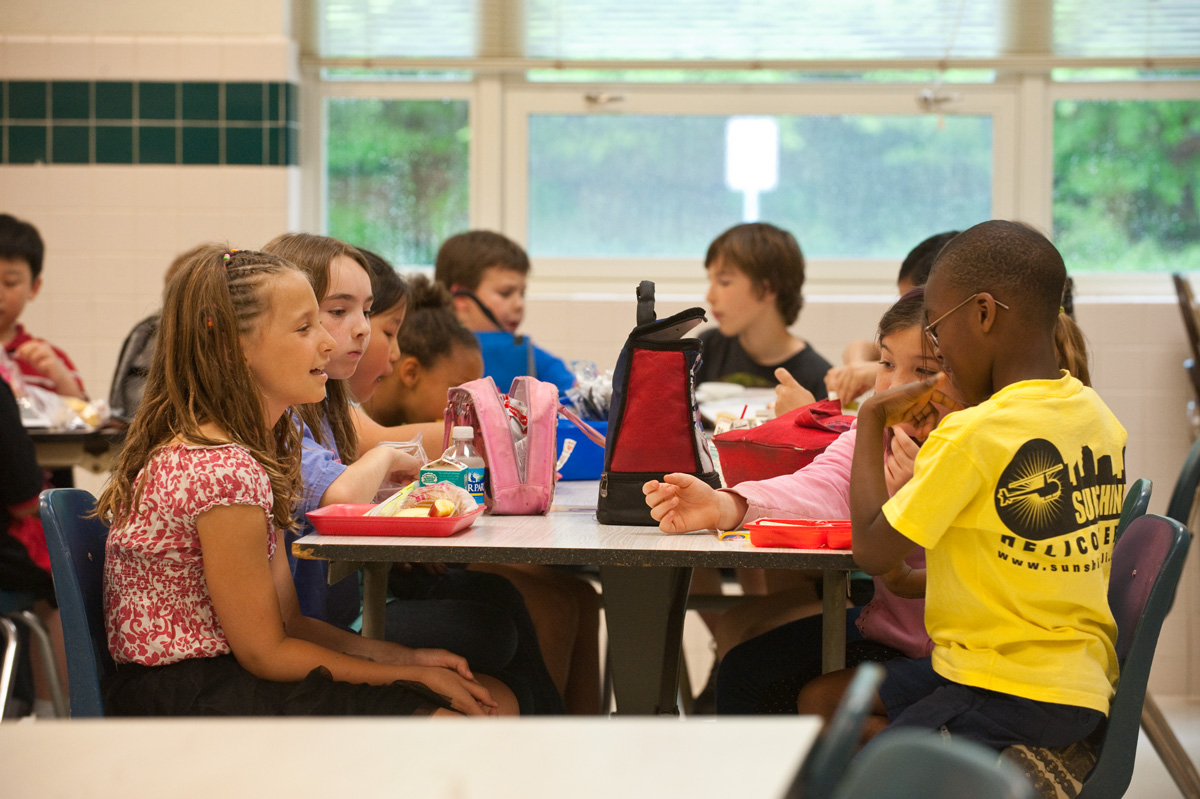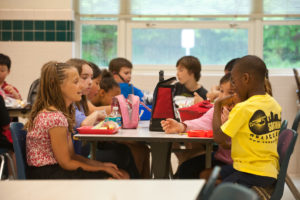Lunch Staff Learn Communication Techniques to Help Children Improve Behavior

 “They’re fine when they’re with me. But when they step outside the walls of my classroom, their behavior falls apart,” says a fifth grade teacher. It’s a common lament. Many teachers have success in teaching children to be calm and respectful in the classroom, only to have the children “lose it” in other areas of the school building.
“They’re fine when they’re with me. But when they step outside the walls of my classroom, their behavior falls apart,” says a fifth grade teacher. It’s a common lament. Many teachers have success in teaching children to be calm and respectful in the classroom, only to have the children “lose it” in other areas of the school building.
That was the case at Kensington Avenue School in Springfield, Massachusetts, where teachers began using the Responsive Classroom approach about a decade ago. While the children’s classroom behavior improved, their behavior elsewhere in the school remained largely unchanged. The difference was most noticeable in the lunchrooms, tight spaces where sound echoed easily. The noise made it even more difficult for students to maintain self-control.
To address the problem, a committee of teachers, other staff, and parents met and decided to offer professional development to the lunch staff, or “lunch teachers,” as they’re called at Kensington. The goal would be to help the lunch teachers use the same communication techniques that teachers were using with students in the classrooms. The consistency, the committee reasoned, should help students carry their calm and respectful classroom behavior into the lunchrooms. Here’s how the process works today:
A mini-workshop early in the school year
During the first six weeks of school, lunch teachers at Kensington are asked to come to school early one day for a mini-workshop. The lunch teachers—a combination of parents, paraprofessionals, and others—are compensated at their regular wage for attending the workshop.
Tina Valentine, a head teacher and a Responsive Classroom certified consulting teacher, leads the thirty-minute workshop, which covers the following:
- Using the all-school signal for quiet—Kensington’s agreed-upon signal is a raised hand. The lunch teachers practice using the signal without adding other verbal directions (shushing or talking), hand signals (finger pointing), or facial expressions, and then waiting for quiet.
- Using positive language to reinforce and redirect behavior—Tina focuses on some key phrases to use in different situations, such as “Remind me what you should be doing right now” or “I see that you’re keeping your hands to yourself.” The lunch teachers practice using this kind of language together.
- Keeping directions to students clear and simple—For example, instead of saying to a child, “You are not supposed to put your tray there. We have talked about safe stacking of trays, and the way you put your tray here is not safe. Please remove your tray and stack it the way it is supposed to be stacked,” the lunch teachers are encouraged to say, “Stop. Please stack your tray on top of the others.”
Lunch teachers find these communication techniques effective for expressing high expectations of students in the lunch-rooms and helping students maintain self-control. Often, they say the workshop helps them feel more comfortable with children, which in turn puts the children more at ease.
Follow-up help
About a week after the workshop, Tina checks in with the lunch teachers to see how things are going and to identify any problems. If a lunch teacher is having trouble with something, Tina makes time to work with that teacher on the issue. If it seems that the group as a whole is struggling, she schedules a refresher with all of them.
The benefits of consistency
The environment in the lunchrooms has improved dramatically since the school began working with the lunch teachers this way. Building on that success, the school began offering similar workshops and coaching, with some modifications, to the office and custodial staff. Principal Margaret Thompson notes, “You just don’t hear adults raise their voices at children here.” Tina adds, “Consistent language fosters a safe environment for learning in the school.”
Tags: Lunchroom, Special Areas